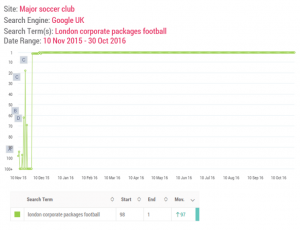Digital marketing budgets are expected to continue growing in 2015, as shown by Gartner’s Digital Marketing Spending report, and CMOs are honed in on the customer experience more than ever. In the advertising realm, programmatic trading, or automating the process of buying and selling digital media and advertising, has been popular among all advertisers and brand marketers. Programmatic trading’s ability to target audiences more accurately at any scale needs to be nourished by clear interactions between advertisers and publishers, and a better-educated market to continue to grow in 2015.
Magna Global estimates that global programmatic ad spend will reach $ 53 billion by 2018. However, despite its growing popularity, only 23 percent of marketers surveyed by Forrester and the Association of National Advertisers have said they understand how programmatic works and have used it in practice. According to this survey, one of the biggest drawbacks of media buying through programmatic is a lack of visibility when it comes to targeting data. Publishers also have doubts about programmatic, the biggest of which is losing control over inventory pricing as inventory is placed on open exchanges via real-time bidding (RTB). While often the easiest way for publishers to monetize inventory is through programmatic, these uncontrolled markets can actually drive the prices down in the long run.
The rise of online ad exchanges has tipped the balance of power when it comes to determining the value of inventory from the publisher to the advertiser. Buyers need access to a greater depth of data than what has traditionally been provided.
An area where it’s been particularly clear that advertisers will pay more for the right impression is in retargeting delivered through RTB. If an advertiser recognizes a cookie, it will pay a premium to put their ad in front of them, as they have a high chance of delivering ROI.
Giving buyers more information means enabling them to identify inventory that’s right for them. One piece of data that is most often dismissed, but is remains most important is the type of content that the ad will be placed on, and is it relevant? Is it about sports? Fashion? Animals? Cooking? If digital media companies can unlock this contextual data on an impression-by-impression basis and communicate it to the marketplace, it gives marketers a way to put their ads in front of audiences engaged in content that’s relevant to their brand.
In addition to contextual data, publishers also serve as gatekeepers to other critical pieces of information, such as viewer engagement and the number of social shares. Viewer engagement data, which can include information such as how long a video was watched, can be important as advertisers determine when and where to place their ad on any video content. Dissecting the content of a video or web page in which the ad is sold, and making that information available to the marketplace means that buyers can make educated decisions about whether certain inventory is right for their campaigns. In return, publishers can validate how they classify premium content and score prices accordingly.
Unfortunately, no one in the advertising industry is doing this particularly well at the moment, which means that publishers are not freeing up inventory to the programmatic environment and are therefore still incurring the high overhead costs of a direct sales team. That may have contributed to the general concerns expressed at the recent Digiday Programmatic Summit; the audience listed concerns such as “fraud,” “viewability” and “premium video inventory.” To combat these challenges in the media industry, we need to rely on data. It is essential that publishers optimize the contextual data to which they have access, so that it can provide advertisers with the essential information they need to make the best ad buying decisions.
Digital & Social Articles on Business 2 Community
(273)







